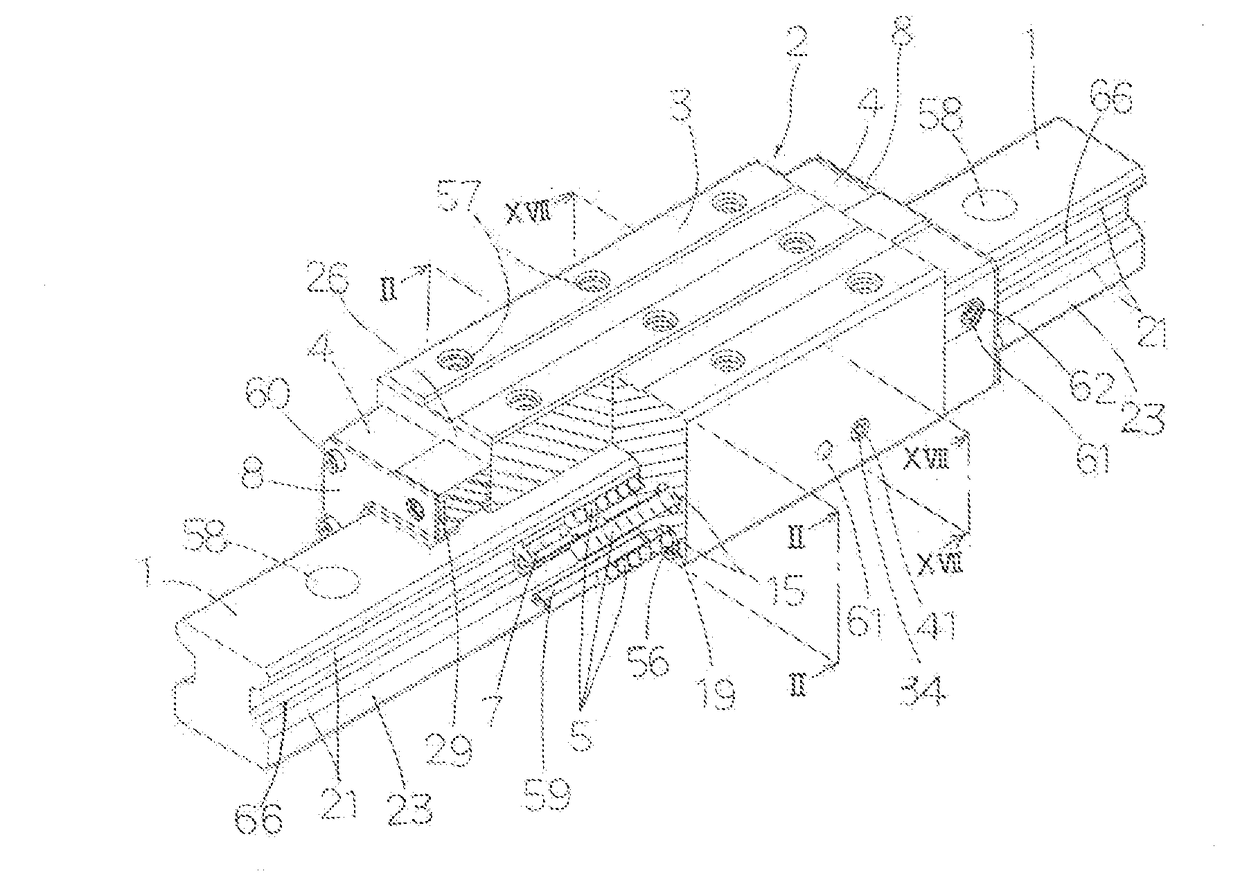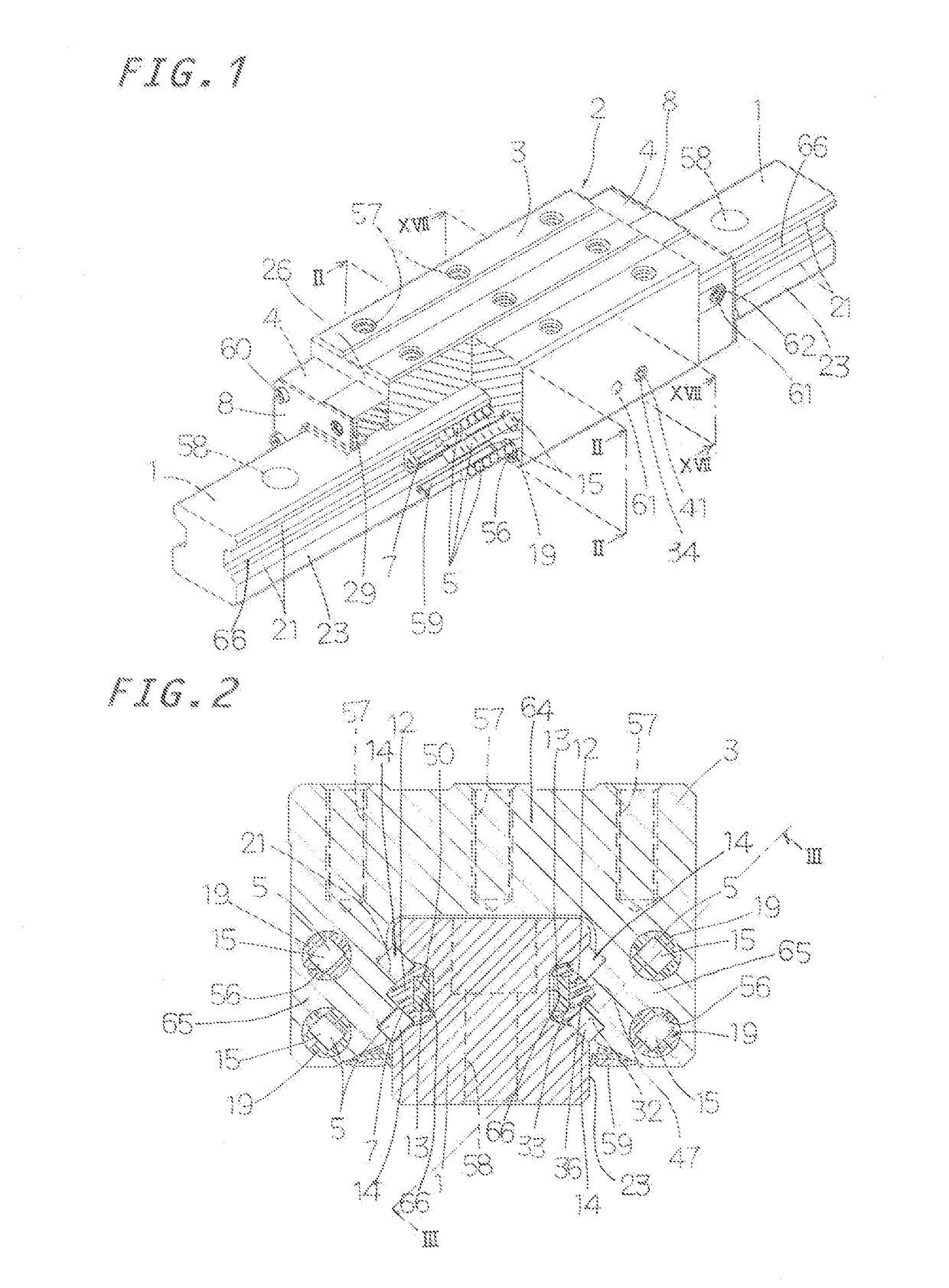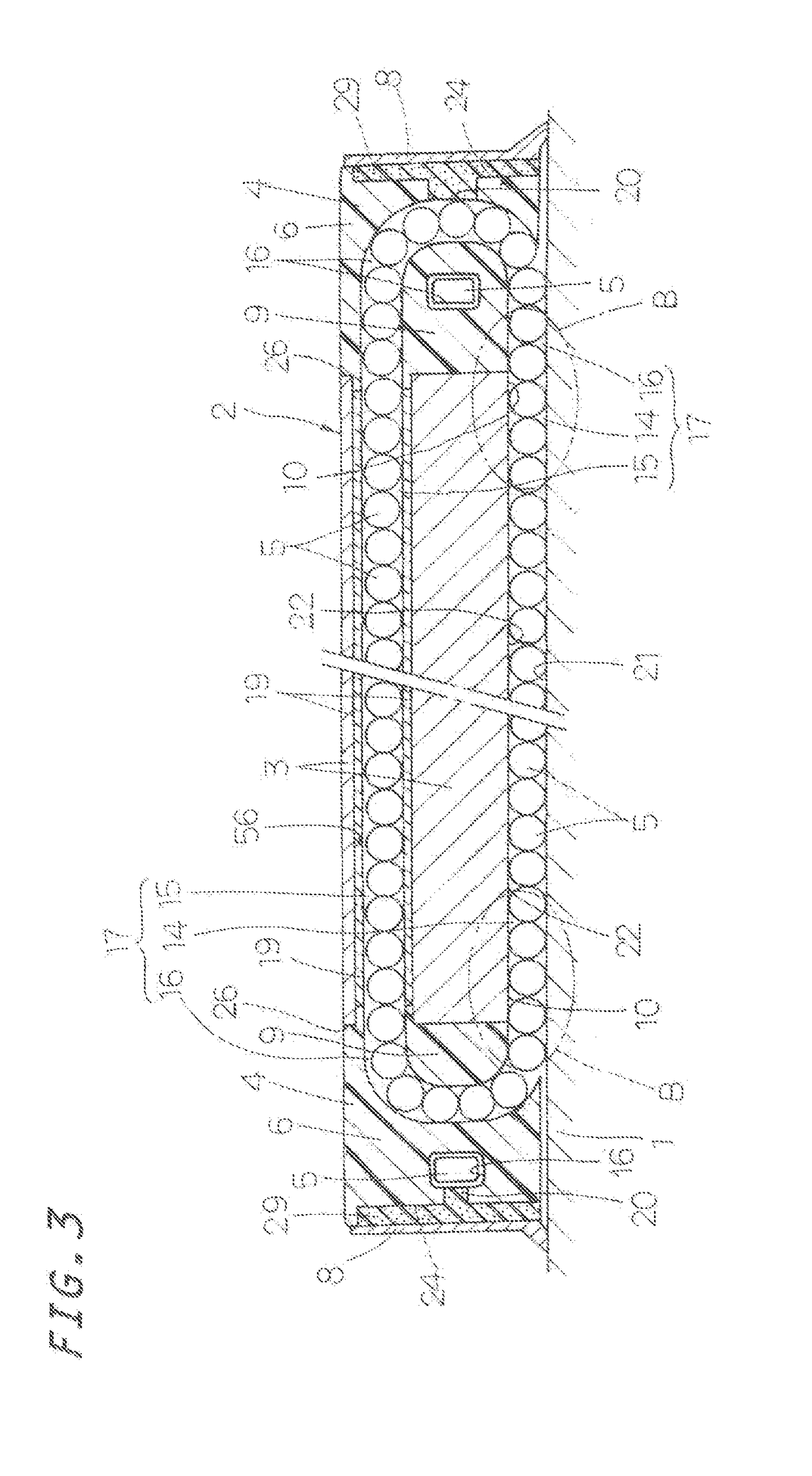Linear motion guide unit
a technology of moving guide unit and guide surface, which is applied in the direction of linear bearings, shafts and bearings, bearings, etc., can solve the problems of small gap between the guide surface, high cost, and uneven rolling of the rollers, so as to reduce costs and reliably press the end surfaces of the rollers. , the effect of smooth rolling
- Summary
- Abstract
- Description
- Claims
- Application Information
AI Technical Summary
Benefits of technology
Problems solved by technology
Method used
Image
Examples
Embodiment Construction
[0035]The linear motion guide unit according to the present invention is applicable to relative sliding members used in various types of apparatus such as machine tools, semiconductor fabrication systems, and precision measuring apparatus.
[0036]An embodiment of the linear motion guide unit according to the present invention will next be described with reference to the drawings.
[0037]As shown in FIG. 1, the linear motion guide unit according to the present invention generally includes a guide rail 1 having raceway surfaces 21 (first raceway surfaces) extending in the longitudinal direction on respective longitudinal sides 23 of the guide rail 1, and a slider 2 which has raceway surfaces 22 (second raceway surfaces) facing the respective raceway surfaces 21 as a result of its wing portions straddling the guide rail 1 and which slides in relation to the guide rail 1 via a plurality of rolling elements, or rollers 5, rolling in load-carrying races 14 each composed of the raceway surface...
PUM
 Login to View More
Login to View More Abstract
Description
Claims
Application Information
 Login to View More
Login to View More - R&D
- Intellectual Property
- Life Sciences
- Materials
- Tech Scout
- Unparalleled Data Quality
- Higher Quality Content
- 60% Fewer Hallucinations
Browse by: Latest US Patents, China's latest patents, Technical Efficacy Thesaurus, Application Domain, Technology Topic, Popular Technical Reports.
© 2025 PatSnap. All rights reserved.Legal|Privacy policy|Modern Slavery Act Transparency Statement|Sitemap|About US| Contact US: help@patsnap.com



